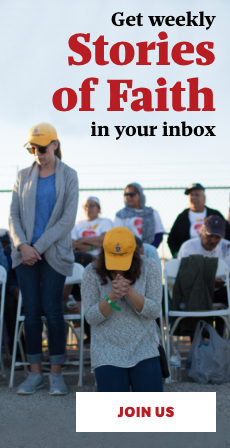Popes influence the course of history, which is why this is such a unique moment of excitement, prayer and eager anticipation in the Catholic Church and beyond.
As Americans, we can think of ourselves as insulated from what happens beyond our shores. Perhaps that is why there was historic unease with Roman Catholic Americans, who for many decades were depicted as blind subjects of a foreign power. But in reality, American Catholics know that there is something special about belonging to a global church, one that is now more than 1.3 billion strong. And the truth is that what happens in Rome reverberates in the rest of the world, including the United States.
As a papal society and American Catholic institution, we at Catholic Extension Society can uniquely track how each pope has influenced the Church in our country.
So before we welcome our newest shepherd on the balcony of St. Peter’s Square, let’s take a look back at five popes who have significantly impacted the growth and trajectory of the Church and society in our country.
1. St. Pius X (1903-1914)

St. Pius X, under whose pontificate Catholic Extension Society was founded in 1905, had a closeness and interest in the Church in the United States, according to the writings of our founder, Father Francis Clement Kelley. In an excerpt from Extension magazine in October 1914, he said the following:
“If the Church in America ever forgets the dead Pope, it may be charged with the basest ingratitude. When he came to the Chair of Peter, we were a missionary country, placed, so far as government was concerned, on a par with the heathen nations. It was the just eye of Pius X that sought us out; that placed us on a pedestal in the Pantheon of the world’s great Churches; that recognized our works; that honored and elevated our prelates; that loved us, not for what we could do for him, but for what we had done, are doing and will do for the cause of the Master he represented. The Pope’s love for America shone out of his eye every time he came face to face with one of our prelates, priests or people.”
Catholic Extension brought church to people in the early days via chapel cars that were sent around the U.S.’s newly minted rail system. When the train carrying a traveling priest pulled into town, the priest would celebrate Mass for the frontier townsfolk in the chapel car. According to Father Kelley, Pius X looked at a picture of this creative use of what was then cutting-edge technology and commented, “Here is a practical idea for the care of scattered people without a church!”
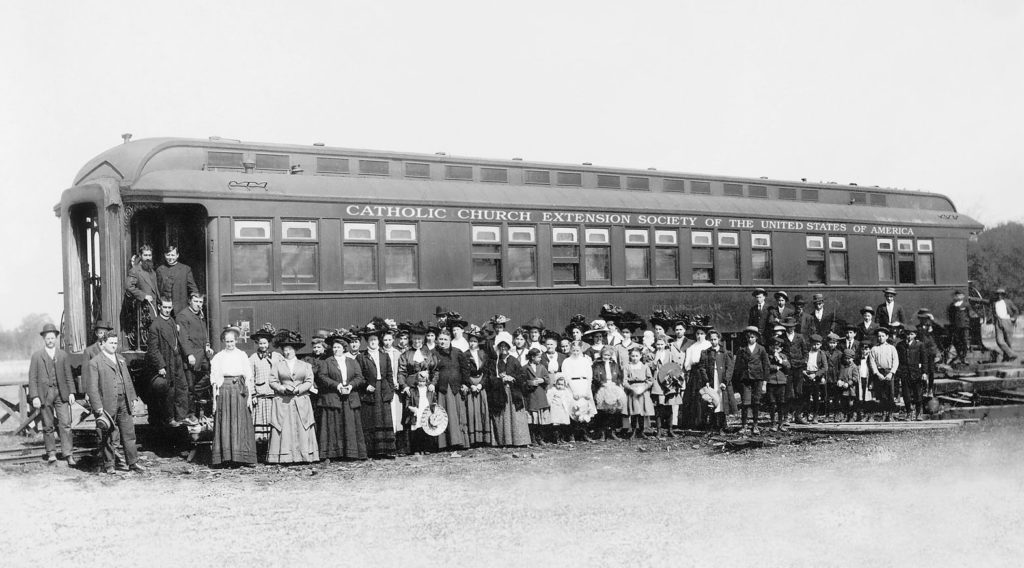
2. Benedict XV (1914-1922)
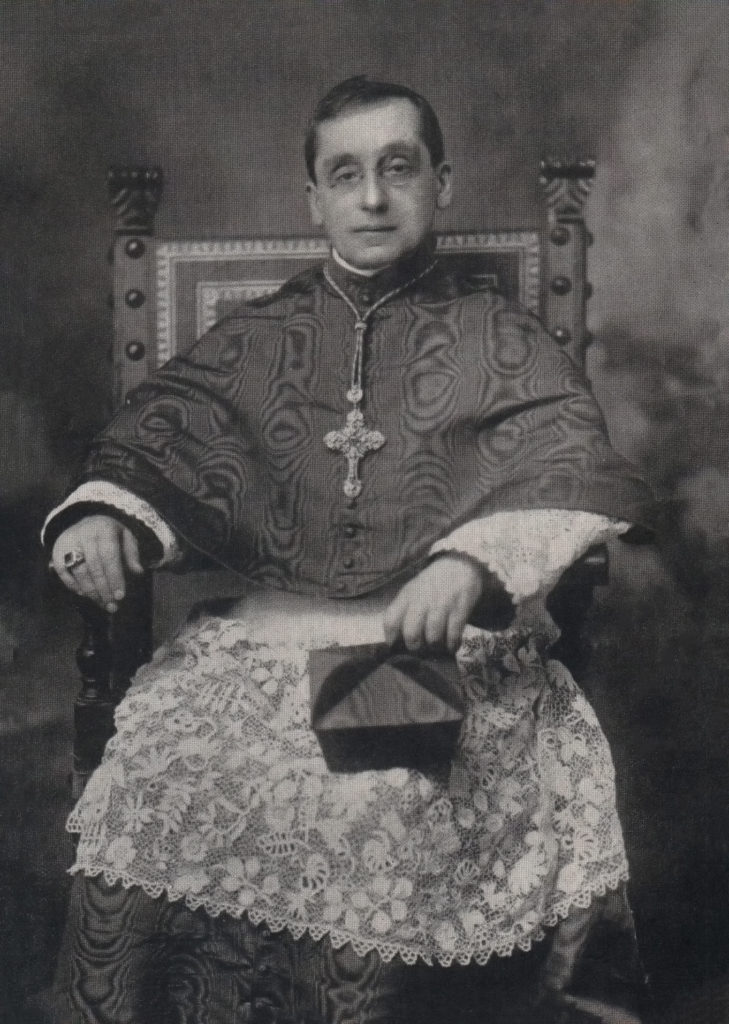
Although Pope Benedict XV is a lesser-known pope, we can credibly look back at his pontificate which immediately succeeded Pius X and refer to it as the “Benedict Boom Years.” He continued to support the Church in the U.S. while Europe was being torn apart by the Great War.
The Church in the U.S. was growing rapidly, as immigrants and refugees flocked to our shores, escaping war and economic hardship in Europe.
During his eight-year pontificate, Pope Benedict XV was deeply interested in missions and developing native-born clergy around the world. Therefore, he was deeply impressed with the pace at which Catholic Extension Society was building churches and producing native-born clergy throughout the new and growing Catholic Church in the U.S.
Then-Vatican Secretary of State Cardinal Gasparri wrote to the president of Catholic Extension to say,
“In particular, His Holiness [Benedict XV] has been pleased with what the [Catholic Extension] Society has done for the construction of churches and schools—the number of which now approximates two thousand—for the furnishing of equipment for poor churches.”
Gasparri added,
Above all, the Holy Father has been moved, in his solicitude as Universal Pastor, in seeing that the [Catholic Extension] Society provides, at its own expense, to safeguard and cultivate in the hearts of many fortunate youths the divine germ of a vocation to the priesthood, and to the apostolate of the Missions.”
Upon Benedict XV’s death in 1922, the president of Catholic Extension Society reflected, “To those who work for the Missions of the Church at home or in foreign lands the name of Benedict the Fifteenth will live forever.”
Indeed, his influence as pope in promoting missions through ground-up development of local people has lived on. Catholic Extension Society has helped build and repair 13,500 churches in America. This includes St. Joseph’s Church in the small town of Mansfield, Louisiana. We built the church in 1907, and it remains a welcoming parish today.
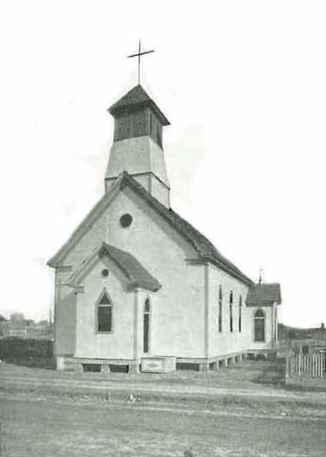
Last year we supported the education of 10,000 lay leaders and over 400 seminarians. Benedict XV had a vision of a church run not by outside foreign missionaries but by local people of faith. Thanks to his encouragement, that dream in the American Church was realized.
Never was the pace of church-building faster than during the pontificate of Benedict XV. During those years, Catholic Extension Society helped with the construction of an average of 150 new churches a year across America as immigrant populations grew and Catholics moved West in search of work in the mining, railroad and agricultural industries. From these humble beginnings the diverse but truly “American Catholic Church” took root in our country.
3. Blessed John XXIII (1958-1963)
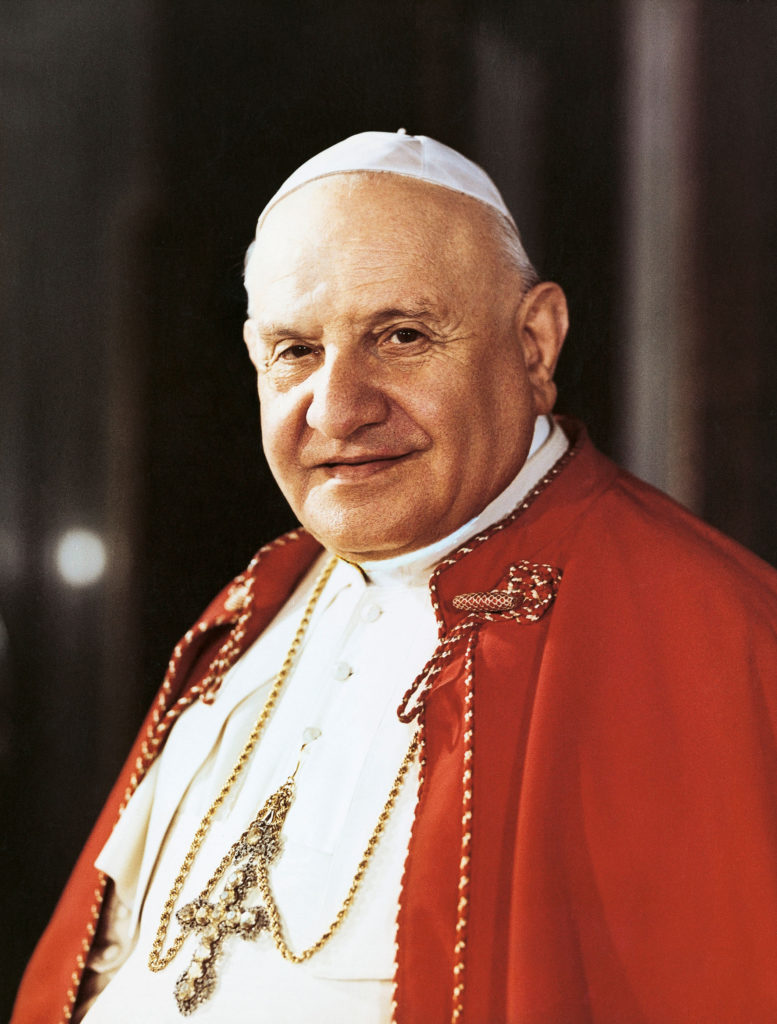
Pope St. John XXIII’s pontificate was short but sweet. He convened the Second Vatican Council, which was one of the most significant moments in the Catholic Church in the past century, if not the past 500 years.
John XXIII’s convening of the Second Vatican Council gave the Church in the U.S. and all around the world an opportunity to live our Catholic faith with greater clarity and conviction in the modern world.
According to Catholic Extension Society’s magazine, the global Catholic population at the time John XXIII became pope in 1959 was more than 500 million. Sixty-six years later, the Catholic population has grown to more than 1.3 billion. Some of that growth has occurred in the U.S. as well, with many Extension-supported dioceses seeing massive growth from census to census.
Catholic Extension Society is helping these dioceses respond to this growth with critical support.
For example, in Brownsville, Texas, about 85% of the people are Catholic (the most densely Catholic diocese in the country), and the population continues to grow. Yet 40% of those Catholics live below the poverty line (the highest rate of poverty for any diocese in the country). Catholic Extension Society is funding the construction of new churches and new ministries in this diocese to help accommodate this growth.

John XXIII proved that the church can forge ahead even amid great challenges. The world faced many daunting crises in his day, such as the Cuban Missile Crisis, and although he was pope for only a short period of time, he set the Church up to evangelize in the modern world, amid the many challenges that it faced.
Referring to his “Pacem in Terris (Peace on Earth)” encyclical, Catholic Extension’s magazine commented in June 1963,
“Time alone will tell to what extent the Holy Father’s great ‘appeal to love,’ will be fully ‘understood,’ by all men of our time.”
4. Pope St. John Paul II (1978-2005)

During his nearly 27-year pontificate, the Holy See appointed three Catholic Extension Society presidents, including the late Bishop William Houck (pictured below), who reflected on John Paul II’s legacy with the following thoughts:
“His commitment to evangelization and his missionary spirit have certainly inspired us at Catholic Extension with zeal for our ‘home missions’ here in the United States.”
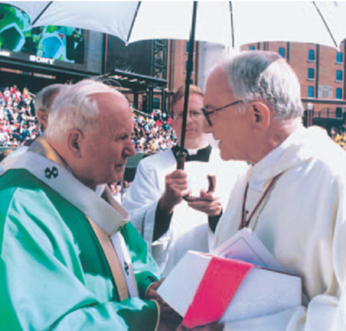
But what distinguished John Paul II the most were his travels. No other pope has traveled as much as Pope John Paul II. He covered more than 725,000 miles to 129 countries, averaging four visits per year, including seven trips to the U.S. This “pilgrim pope” fundamentally changed the relationship of the papacy with the rest of the world. Gone were the days of the pope as the “prisoner of the Vatican.” Today, popes must globe-trot.
In 1979, early into his pontificate, Pope John Paul II visited Chicago, where Catholic Extension Society is headquartered. Then-president Father Ed Slattery commented,
“Thank you, Pope John Paul II, for coming to America … Many of these are the people who count on [Catholic] Extension for help and many others support the [Catholic Extension] Society in its apostolic and evangelical work. Thank you for encouraging us and for your special blessing.”
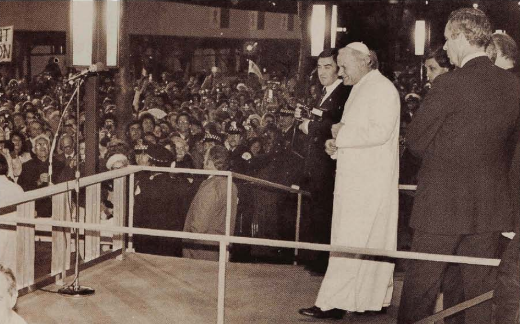
Indeed, John Paul II was seen as a messenger of hope and spoke the language of “hope” so articulately. Remember his book of reflections titled “Crossing the Threshold of Hope”? This was a message that particularly resonated with young people. Pope John Paul II started World Youth Day in 1986, and held nine such rallies across the world every two years, including in the U.S. in 1993 (Denver). These events consistently drew millions of young people, none more so than Manila in the Philippines in 1995, which attracted more than 5 million people—one of the largest gatherings of humanity in the world.
Catholic Extension Society continues to build on his legacy of putting young people, like the ones pictured below, at the center of the church by funding scholarship programs for young adults who seek to work in the church as lay, religious and ordained leaders; by supporting campus ministry in 100 college campuses across the country; and by funding local ministries that touch the lives of millions of youth each year.
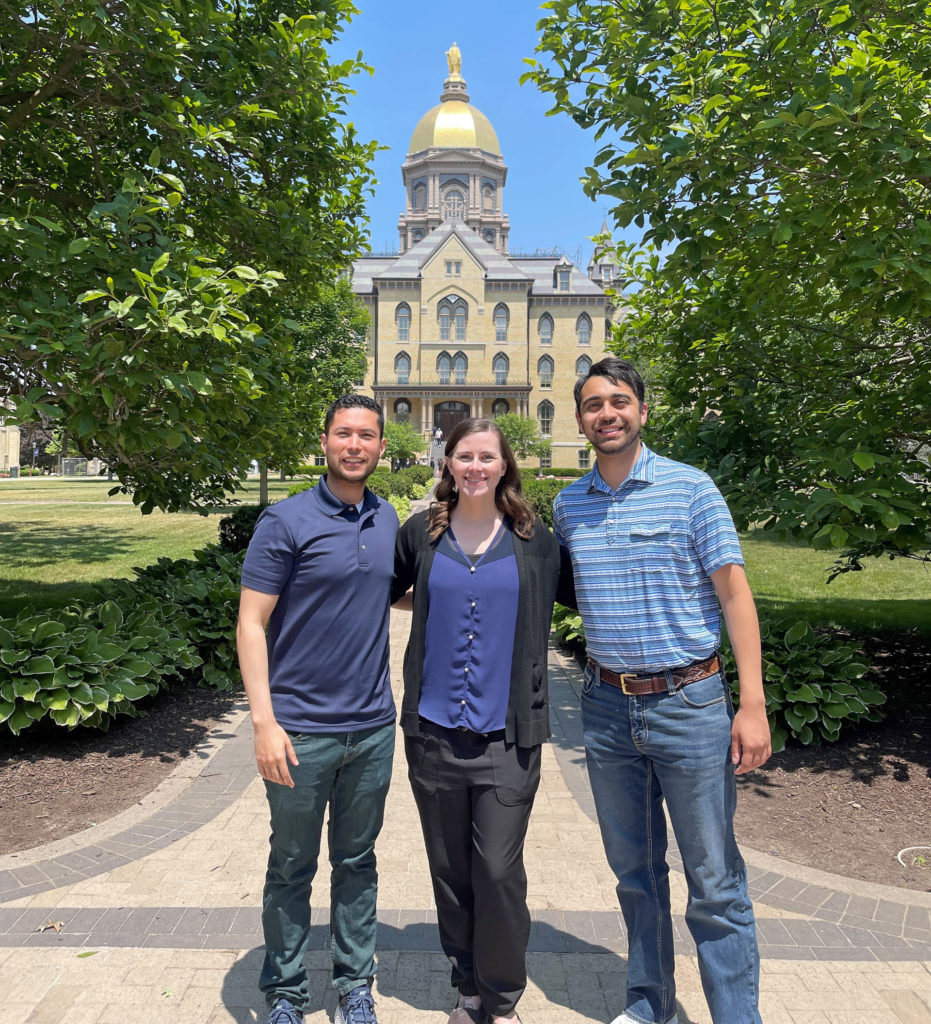
5. Pope Francis (2013-2025)
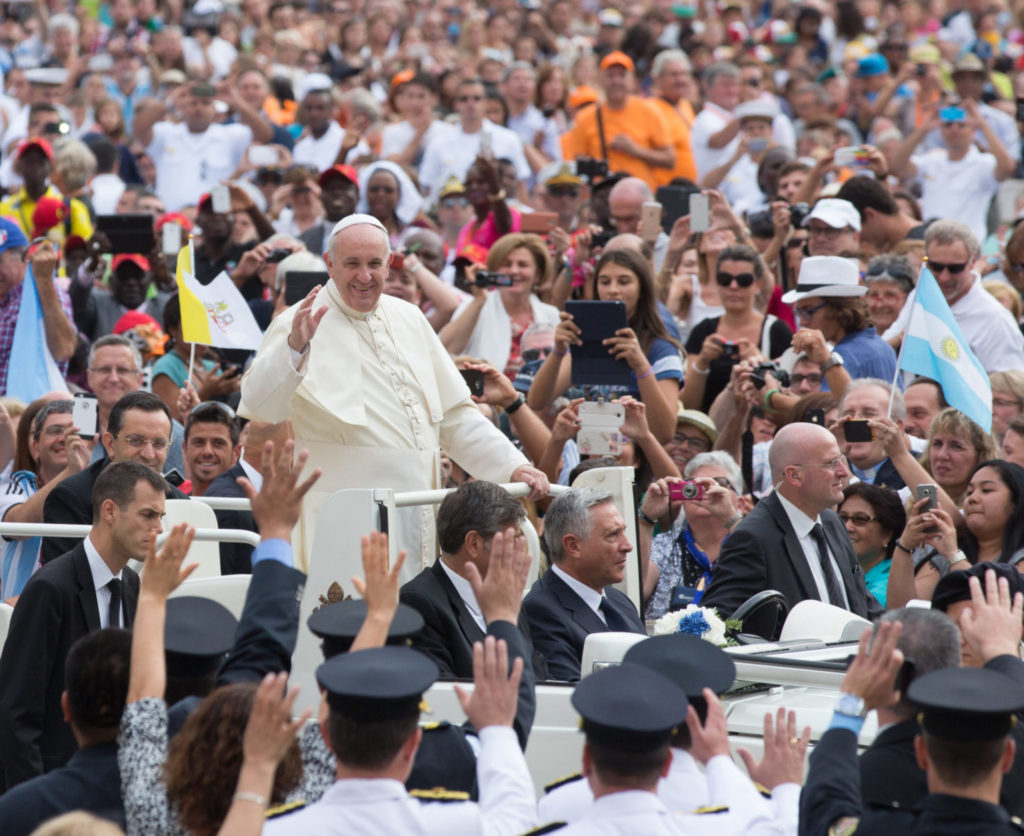
There is no doubt that the first pope from the Americas had a huge impact on those of us in this part of the world. It was on Christmas Day in 1512 that the first Catholic bishop, Alonso Manso, arrived on the island of Puerto Rico from Spain, officially marking the beginning of the institutional Church in the New World.
Five hundred years and three months later, the first pope from this hemisphere emerged, which is a fitting exclamation point to the five centuries of faith that have beautifully unfolded in North and South America—now home to approximately 650 million. Having had this pope represent us is quite an amazing rite of passage when you consider that only about a dozen nationalities have ever been represented from the Chair of Peter.
But more than just representation, Pope Francis offered us a profound and substantial spiritual diet throughout his 12 years as pope that reoriented the entire Church.
Read our article remembering our many special moments with Pope Francis.
He called for a “Poor Church for the Poor.” He said the following in his encyclical, The Joy of the Gospel:
The worst discrimination the poor face is a lack of spiritual care … we must not fail to offer him his friendship, his blessing.” (200)
It was St. Francis, the great medieval saint from Assisi, Italy, who renounced his self-absorbed life and gave up his wealth to begin a life of prayer and service to the poor. His simple witness of making the poor and outcasts the center of attention has captured the imagination of Christians for centuries, and his life serves as a perpetual reminder of the centrality of the poor in all that we do as a Church.
For 120 years, Catholic Extension Society has existed for one purpose: to allow the poor and the scattered in America to know the transformative power of faith, which enables them to see and believe that they are more than their circumstances.
Sometimes people forget that extreme poverty is here in America, too. Catholic Extension serves as a voice for many of the forgotten in America, including:
- The seasonal farmworkers in California, who, although they pick our crops, sometimes need to be fed so that they can survive between paychecks
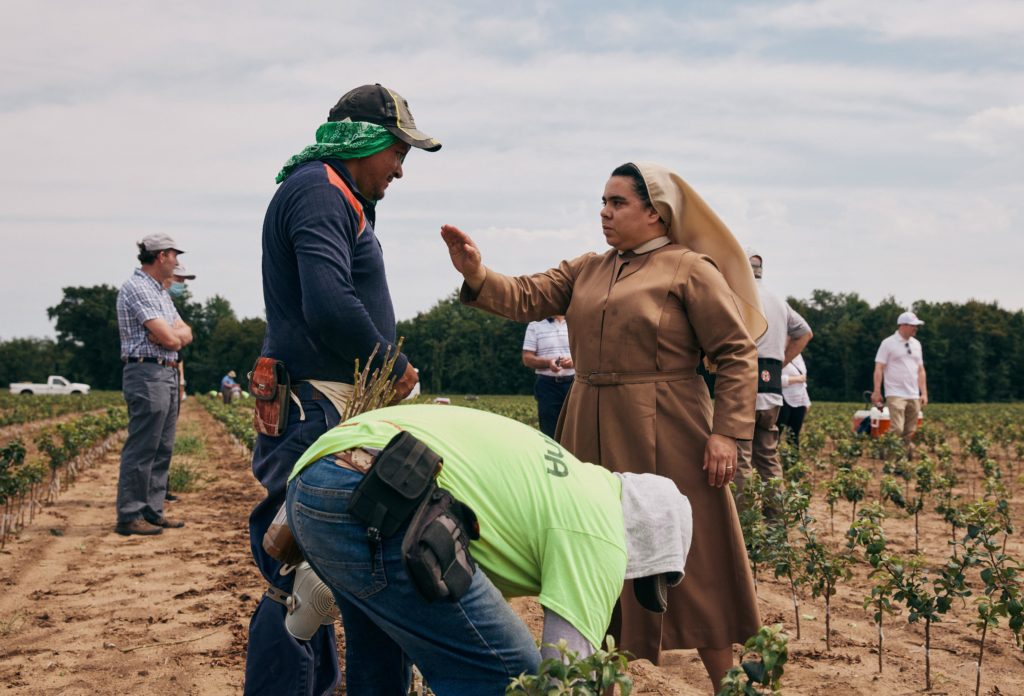
- Native peoples living on tribal lands sometimes without basic necessities such as water
- The Black community in Selma, Alabama, which consists of 45% of children living below poverty
The poor are never far away, and Pope Francis will forever remind us that being Catholic necessitates having a strong commitment to the poor.
